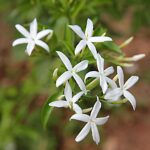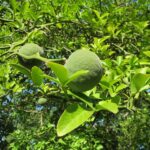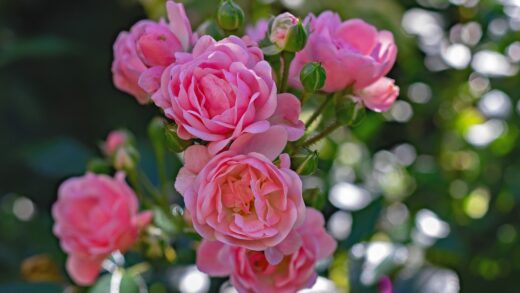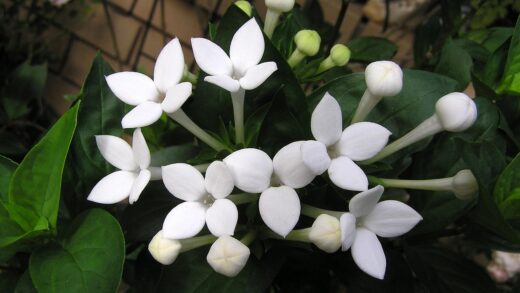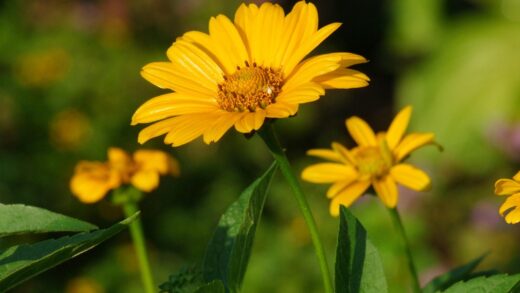Successfully establishing rose campion in a garden landscape hinges on a solid understanding of its preferred planting conditions and its straightforward methods of propagation. This charming, silver-leaved plant is valued for its resilience and its profusion of vividly coloured flowers, making the initial effort of proper placement and sowing well worth the reward. Whether starting from seed or transplanting nursery-grown specimens, the fundamental principles remain the same: providing the right environment from the outset is the key to a thriving, self-sustaining population. Careful consideration of soil drainage, sun exposure, and timing will ensure these plants not only survive but flourish, gracing the garden for years to come.
The process of planting rose campion begins with meticulous site preparation. As a plant native to regions with gritty, free-draining soils, it has an inherent intolerance for ‘wet feet’. This makes the selection and amendment of the planting area the most critical step. Gardeners must prioritize locations that do not collect standing water, such as slopes, raised beds, or areas with naturally sandy or gravelly soil. For those with heavy clay, incorporating materials like compost, leaf mould, and coarse sand or fine grit is not merely beneficial but essential for long-term survival. This initial investment in soil structure addresses the plant’s primary vulnerability and lays the groundwork for robust growth.
Propagation of rose campion is a delightfully simple affair, which contributes to its popularity. The plant is most commonly grown from seed, a method that is both economical and highly effective. Rose campion seeds have a specific requirement for a period of cold, moist conditions to break their dormancy, a process known as cold stratification. This can be achieved naturally by sowing seeds directly in the garden in autumn, or artificially by chilling the seeds before a spring sowing. Understanding this germination trigger is fundamental to achieving a high success rate.
Beyond seed propagation, rose campion can also be propagated through division or by taking basal cuttings, although these methods are less common due to the ease and prolificacy of seeding. Division is best performed in the spring on established clumps, while basal cuttings are taken from the new growth at the base of the plant. These vegetative methods allow for the exact replication of a parent plant, which can be particularly useful for select cultivars with unique flower colours or forms. Regardless of the method chosen, the principles of providing well-drained soil and adequate moisture for establishment remain paramount.
Preparing the ideal planting site
The first and most crucial phase in the successful cultivation of rose campion is the careful preparation of the planting site. This plant’s survival is intrinsically linked to soil drainage, and failure to provide adequate conditions will almost certainly lead to disappointment. Begin by selecting a location that receives full sun for at least six hours a day, as this promotes the most compact growth and prolific flowering. An area with some protection from harsh afternoon sun can be tolerated, especially in hotter climates, but abundant light is key.
More articles on this topic
Once a sunny spot has been identified, the focus must shift to the soil itself. Assess the existing soil texture and drainage. If the soil is heavy clay, it will need significant amendment to create the environment rose campion needs. The goal is to improve both drainage and aeration. This can be achieved by incorporating generous amounts of organic matter, such as compost or well-rotted manure, which helps to bind clay particles into larger aggregates, creating more air spaces. Adding inorganic materials like horticultural grit, coarse sand, or perlite will further enhance the soil’s ability to shed excess water.
The ideal soil for rose campion should be of average to low fertility; overly rich soil can lead to lush, floppy foliage at the expense of flowers. Therefore, while organic matter is beneficial for structure, heavy applications of nitrogen-rich fertilizers should be avoided. A soil pH that is neutral to slightly alkaline is preferred, though the plant is adaptable. If the soil is known to be very acidic, a light application of garden lime can be beneficial, but it is always wise to perform a soil test before making significant pH adjustments.
Before planting, the entire bed should be loosened to a depth of at least 12 inches (30 cm) to ensure that the roots can easily penetrate the soil. This deep preparation encourages the development of a strong, extensive root system, which is vital for the plant’s future drought tolerance. Remove any weeds or large stones from the area. After amending and loosening the soil, rake the surface level, creating a fine, friable tilth ready to receive either seeds or young plants.
Propagation from seed
Propagating rose campion from seed is the most common and rewarding method, often resulting in a generous number of plants. The key to success lies in understanding the seeds’ need for cold stratification. This requirement means the seeds must experience a period of cold, damp conditions before they will germinate. This process mimics the natural winter conditions the seeds would face in their native habitat. Gardeners can leverage this by sowing seeds directly into a prepared garden bed in late autumn or early winter. The natural temperature fluctuations of winter will provide the necessary stratification, and seedlings will emerge in the spring as the soil warms.
More articles on this topic
For those who prefer to start seeds indoors for a spring planting, the stratification process must be replicated artificially. This can be done by mixing the seeds with a small amount of damp sand, vermiculite, or a seed-starting mix. The mixture should then be placed in a sealed plastic bag or container and refrigerated for a period of four to six weeks. It is important that the medium is damp but not wet, as excessive moisture can cause the seeds to rot during the cold period.
After the stratification period, the seeds can be sown. Whether sowing directly outdoors in spring or into trays indoors, the technique is the same. Because rose campion seeds require light to germinate, they should not be buried. Simply press the seeds lightly onto the surface of the soil to ensure good contact. If starting indoors, use a well-draining seed-starting mix and place the trays in a location with bright, indirect light or under grow lights. Maintain consistent moisture by misting the surface, as pouring water can easily dislodge the tiny seeds.
Germination typically occurs within two to three weeks once the seeds are in warm, bright conditions. Once the seedlings have developed their first set of true leaves, they can be carefully thinned to prevent overcrowding. If started indoors, the seedlings should be gradually acclimatized to outdoor conditions—a process known as hardening off—over a week or two before being transplanted into their final garden positions. This gradual introduction to sun, wind, and fluctuating temperatures is vital to prevent transplant shock.
Vegetative propagation methods
While growing from seed is the most prevalent method, rose campion can also be propagated vegetatively through division or basal cuttings. These techniques are particularly useful for perpetuating specific cultivars, such as those with white or bicolour flowers, as they create genetically identical clones of the parent plant. Division is best suited for established, mature clumps that are at least two or three years old. The optimal time to divide rose campion is in the early spring, just as new growth is beginning to emerge.
To divide a clump, carefully excavate around the entire plant and lift it from the ground with the root ball as intact as possible. Gently shake or wash off excess soil to expose the crown and root structure. Using a sharp, clean knife or a spade, separate the clump into smaller sections. Each new division must have a healthy portion of the crown and a substantial root system. Discard any old, woody parts from the center of the original clump and replant the vigorous outer sections immediately into prepared soil, watering them in well to settle the soil around the roots.
Basal cuttings offer another method for vegetative propagation and are also best taken in the spring. Look for the new, non-flowering shoots emerging from the base of the plant. Using a sharp, sterile knife, cut a shoot that is about 3 to 4 inches (7-10 cm) long, taking a small sliver of the crown or rootstock at its base. This ‘heel’ of older tissue often encourages better rooting. Remove the lower leaves from the cutting to expose a couple of inches of bare stem.
To encourage root development, the base of the cutting can be dipped in a rooting hormone powder, although this is not always necessary. Insert the prepared cuttings into a pot filled with a moist, sterile, well-draining medium, such as a mix of peat and perlite or sand. Cover the pot with a plastic bag or place it in a propagator to maintain high humidity. Position the cuttings in a warm location with bright, indirect light. Roots should begin to form within a few weeks, after which the new plants can be gradually hardened off and transplanted into the garden.
Transplanting and spacing
The final step in the planting process is the careful transplanting of seedlings or nursery-grown plants into their permanent location in the garden. The best time for transplanting is in the spring, after the last risk of frost has passed, or in early autumn, giving the plants enough time to establish their roots before winter. Choose a cool, overcast day for transplanting if possible, as this will minimize water loss and reduce stress on the young plants. Water the plants thoroughly in their pots an hour or so before moving them to ensure they are well-hydrated.
When planting, dig a hole that is slightly wider and the same depth as the pot the plant is in. Gently remove the plant from its container, being careful not to damage the root ball. If the plant is root-bound, with roots circling tightly at the bottom, gently tease them apart to encourage outward growth into the new soil. Place the plant in the hole so that the top of the root ball is level with the surrounding soil surface. Planting too deeply can lead to crown rot, a common issue with this species.
After positioning the plant, backfill the hole with the prepared soil, gently firming it around the root ball to eliminate any large air pockets. Proper spacing is important to ensure good air circulation, which is key to preventing fungal diseases. Space individual rose campion plants approximately 12 to 18 inches (30-45 cm) apart. This may seem sparse at first, but the plants will quickly fill in the space, forming a cohesive and attractive clump.
Once the plants are in the ground, water them thoroughly to settle the soil and provide essential moisture to the roots. For the first few weeks after transplanting, monitor the soil moisture and water regularly to help the plants establish themselves. A light layer of gravel or grit mulch can be applied around the base of the plants, which helps to suppress weeds, conserve soil moisture, and, most importantly, keep the crown dry. Avoid using heavy organic mulches that can hold too much moisture against the plant’s base.












